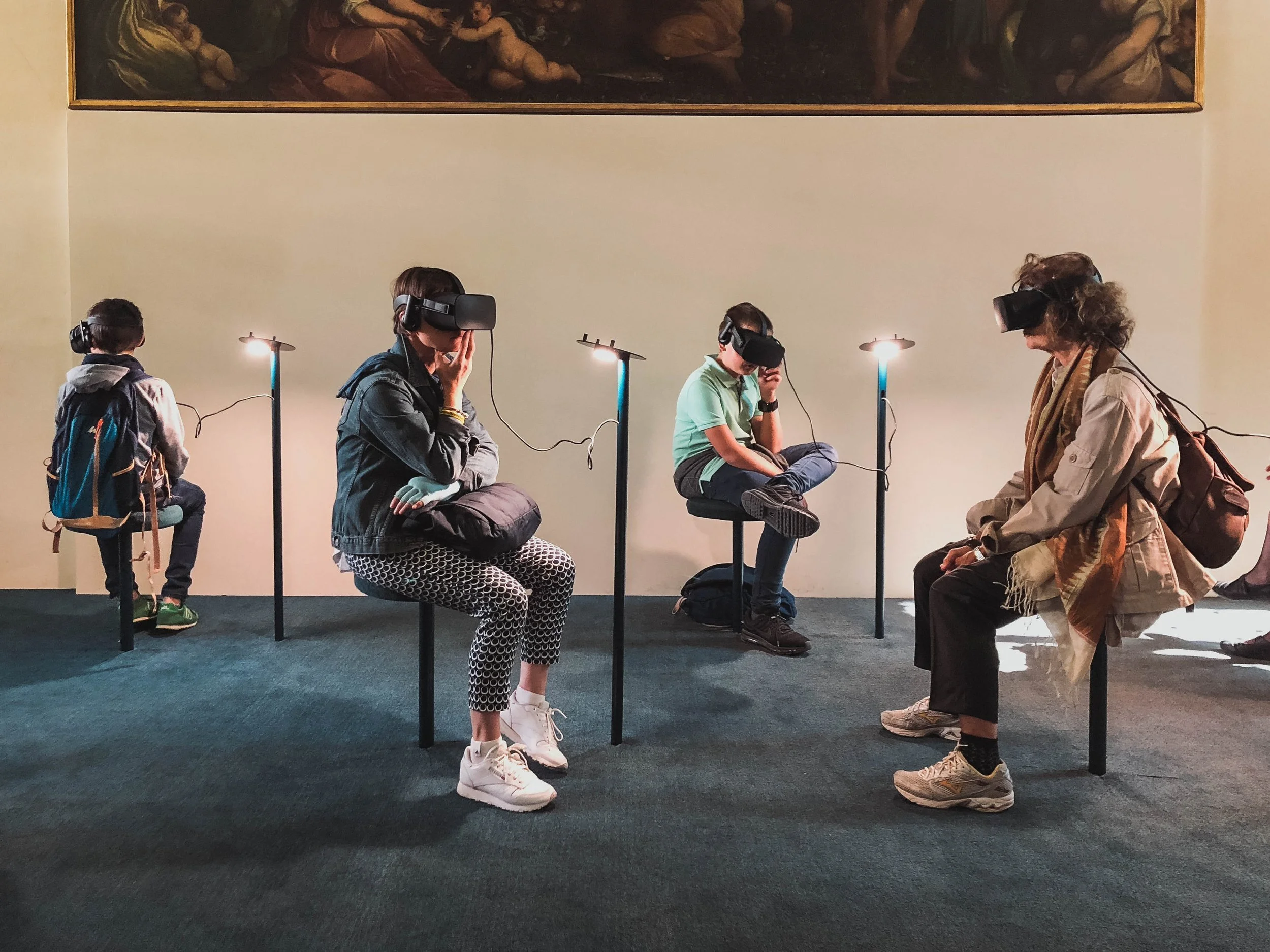What is XR vs AR and VR?
XR technologies have the potential to revolutionise many different industries, from entertainment and gaming to education and healthcare. With the increasing efficiency of technology, we can expect to see more applications for XR in our daily lives.
Augmented reality (AR) overlaps digital information on top of the physical world. The concept actually dates back to the 50’s, while Tom Caudell and David Mizell in 1990 coined the phrase “AR”. AR is typically experienced through a device, such as a smartphone or a tablet, that uses a camera to display the information on top of the real-world view. For example, an AR game might display digital characters on top of a real-world background, or a shopping app might show what a piece of furniture would look like in a person's home.
Virtual reality (VR), on the other hand, involves creating a fully immersive digital environment in which users can interact. Traditionally, this is typically done using a headset that covers the user's eyes and ears, blocking out the natural world and replacing it with a digital one. VR is often used for gaming, but it can also be used for training simulations, virtual tours and even retail outlets. The number of degrees-of-freedom (DoF) is the main distinction between different VR devices, which are the number of parameters in a system that can be very independent of each other. In plain English, certain DoF can support rotational tracking or rotational and translational tracking.
XR, a term used to describe the blending of real and virtual worlds, can be used to refer to various distinct concepts—most notably AR and VR. Many practitioners us XR as an overarching term to describe “all” forms of new realities. This includes augmented reality (AR) and virtual reality (VR) technologies and any other technology that blurs the line between the physical and digital world. A recent report from Deloitte, proposed that in XR or mixed reality, “the virtual and real worlds come together to create new environments in which both digital and physical objects—and their data—can coexist and interact with one another”
XR technologies have the potential to revolutionise many different industries, from entertainment and gaming to education and healthcare. With the increasing efficiency of technology, we can expect to see more applications for XR in our daily lives.
Want to learn more about mixed reality? Get in touch or subscribe to get these articles straight to your inbox.
How long is too long in VR?
The technology has leaped in bounds since it was first used in the 1980s by computer scientist and philosopher Jaron Lanier. However, with this immersion comes the potential for users to spend more extended periods of time in VR. But just how long is too long to spend in virtual reality?
Virtual reality (VR) technology has come a long way in recent years, since it was first allowing users to immerse themselves in a digital world fully. The technology has leaped in bounds since it was first used in the 1980s by computer scientist and philosopher Jaron Lanier. However, with this immersion comes the potential for users to spend more extended periods of time in VR. But just how long is too long to spend in virtual reality?
First, it's essential to understand the potential effects of prolonged VR use on the human body. VR headsets and other equipment can cause eye strain and discomfort, as well as a condition known as "cybersickness," which is similar to motion sickness and can cause dizziness, nausea, and vomiting. Prolonged VR use can also lead to physical fatigue, discomfort, and potentially more serious health issues such as back and neck pain. It is said that 60-95% of people who use VR experience some level of cybersickness, which 5-13% of people ending their VR session early because of the intensity.
In addition to the physical effects, there are also potential psychological effects of spending too much time in VR. Some studies have suggested that VR can cause users to become disconnected from the real world and potentially lead to social isolation. There is also the potential for users to become overly reliant on VR, which can lead to problems with addiction.
So, just how long is too long to spend in virtual reality? While there is no definitive answer to this question, it's generally recommended that users take regular breaks to avoid the negative effects of prolonged VR use. Some experts suggest taking a break every 30 minutes to an hour, while others recommend setting a daily limit on VR use.
Ultimately, it's up to each individual to determine how long is too long for them to spend in virtual reality. If you start to experience any discomfort or adverse effects from VR, it's important to take a break and rest your body and mind. It's also a good idea to talk to a healthcare professional if you have any concerns about the effects of VR on your health.
In conclusion, while virtual reality can be a fun and exciting technology, it's important to use it responsibly and avoid spending too much time in VR. By taking regular breaks and listening to your body, you can enjoy the benefits of VR without risking your health and well-being.
Are you interested in how Cyberpsychology can help your business? Get in touch!



